
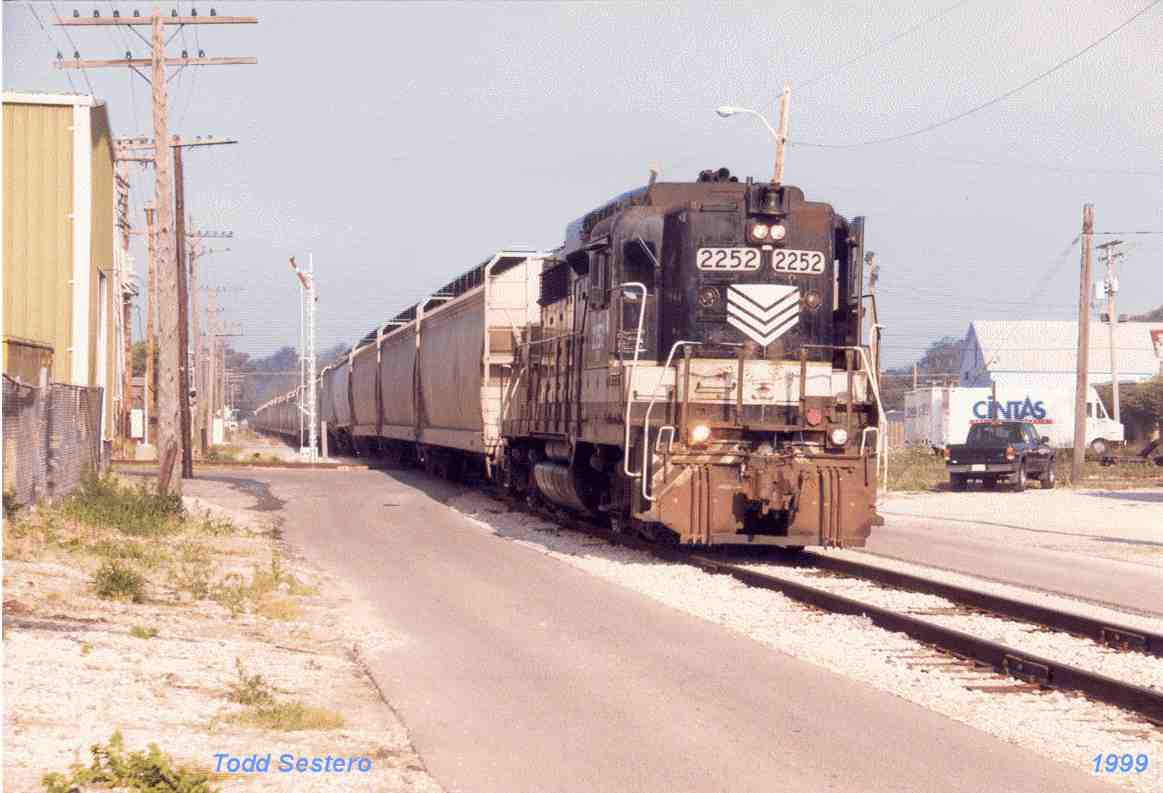


Ball
Banner Box
Banjo
Smashboards
Tilting Targets
Semaphores
This page covers signals that have
(mostly) gone the way of the steam engine. Pretty soon, we will be able to
add B&O CPL's to this page at the rate they are being replaced by color
light signals.
At the top of the page: CIND #2252, a high-nose
GP-30, passing a tilting target signal in Kokomo IN.
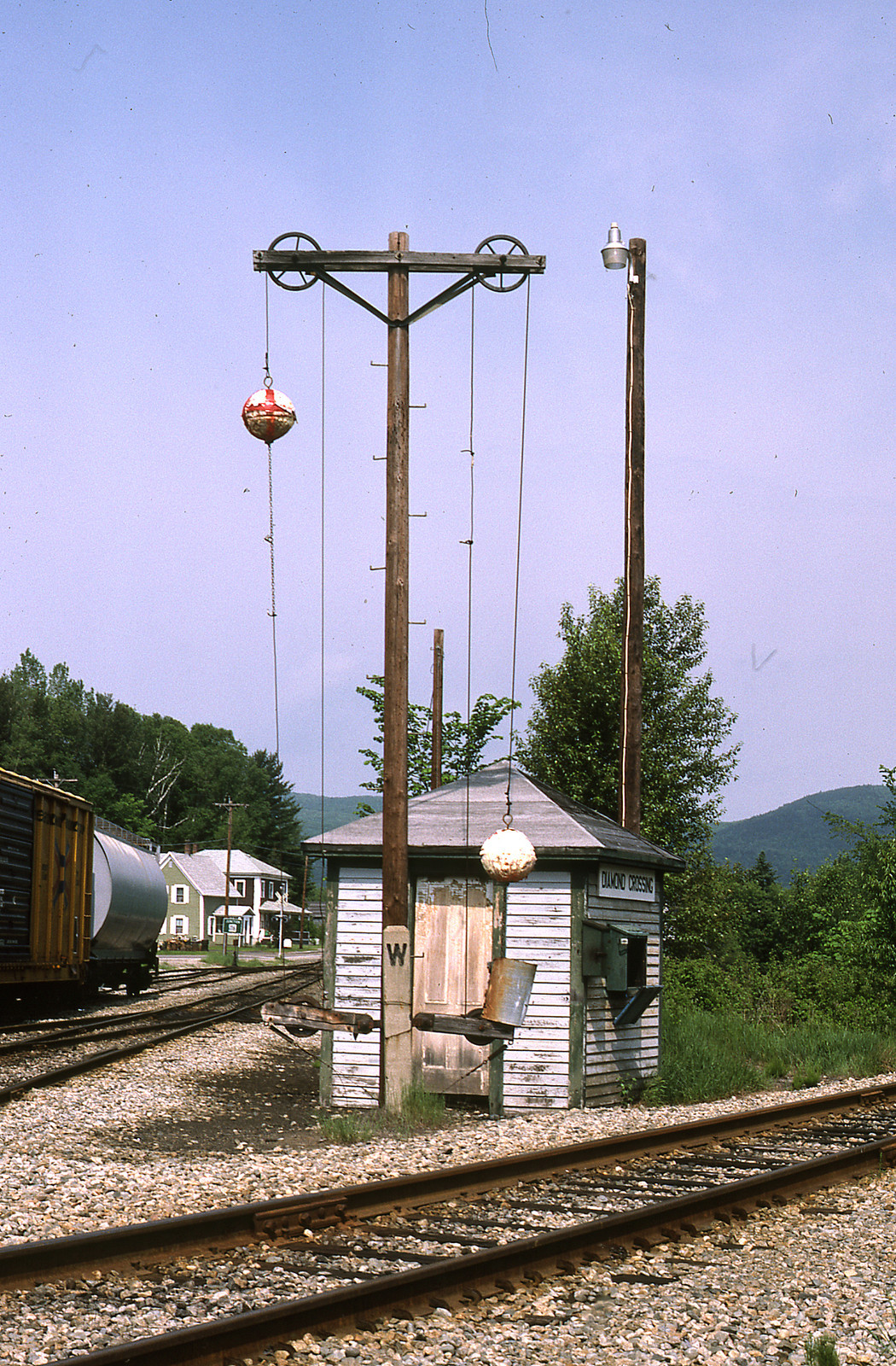
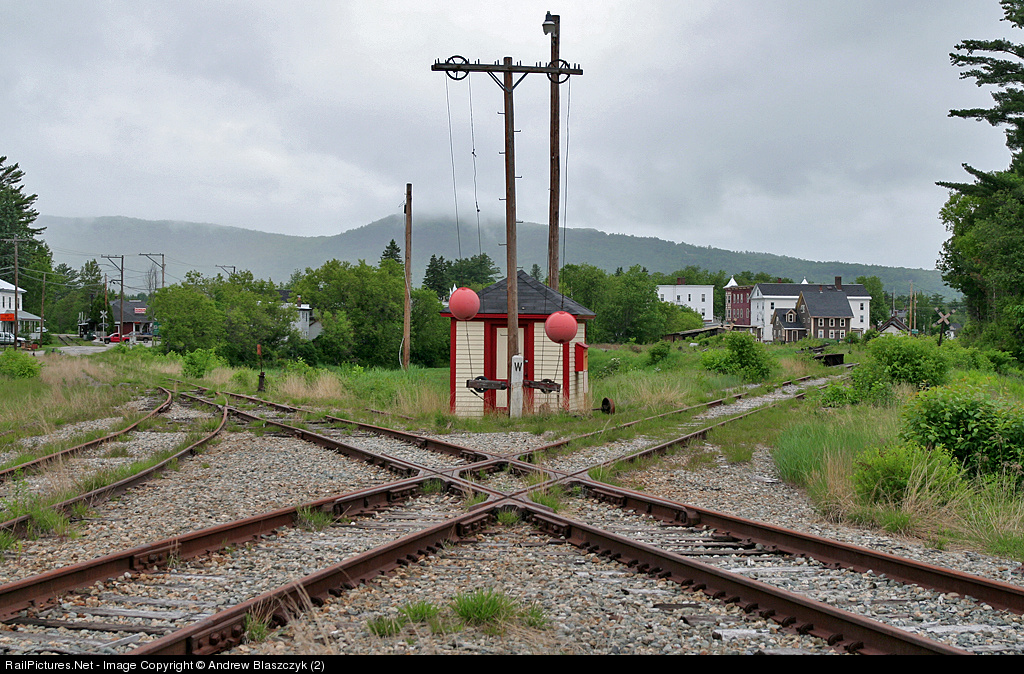
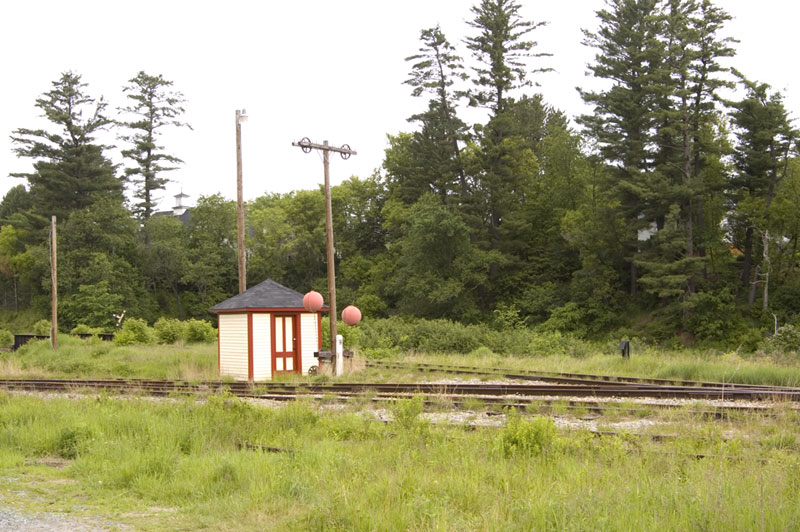
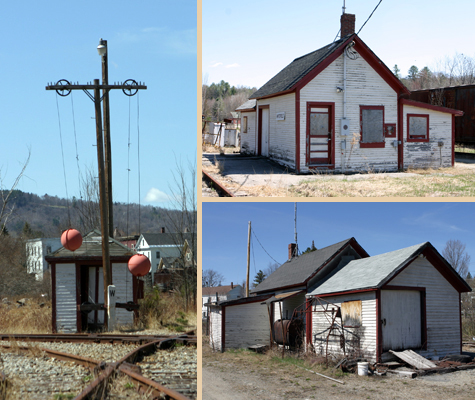
Pictures of the last known surviving
active Ball Signal at Whitefield Junction in
Whitefield NH
It was erected in 1875, and was at the junction of the
Maine Central RR and the Boston & Maine RR
the right picture on the bottom comes from
here
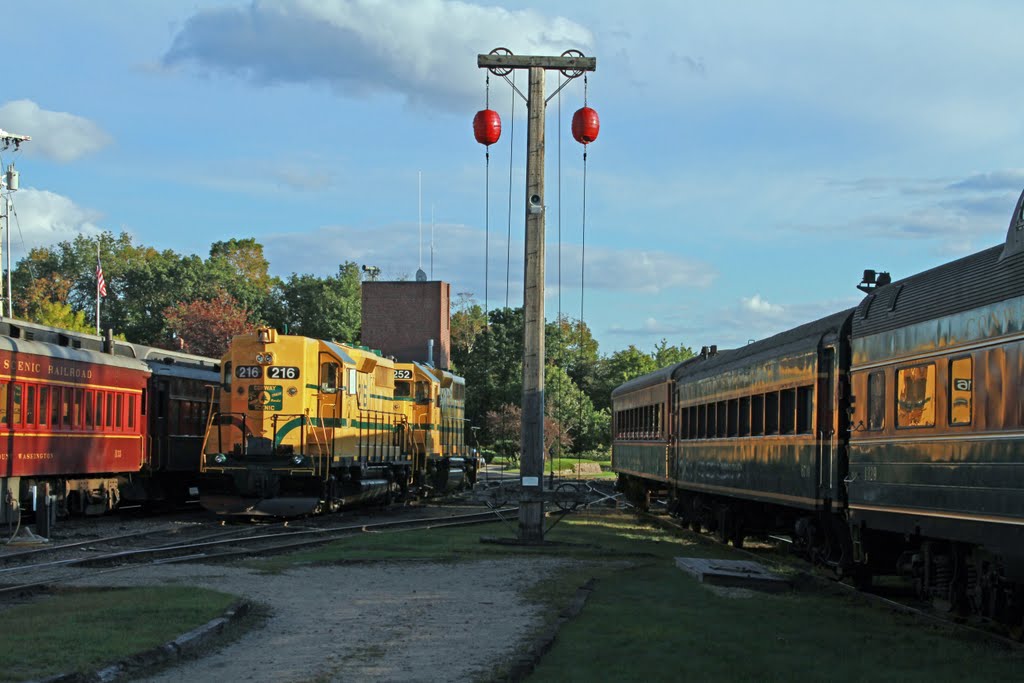
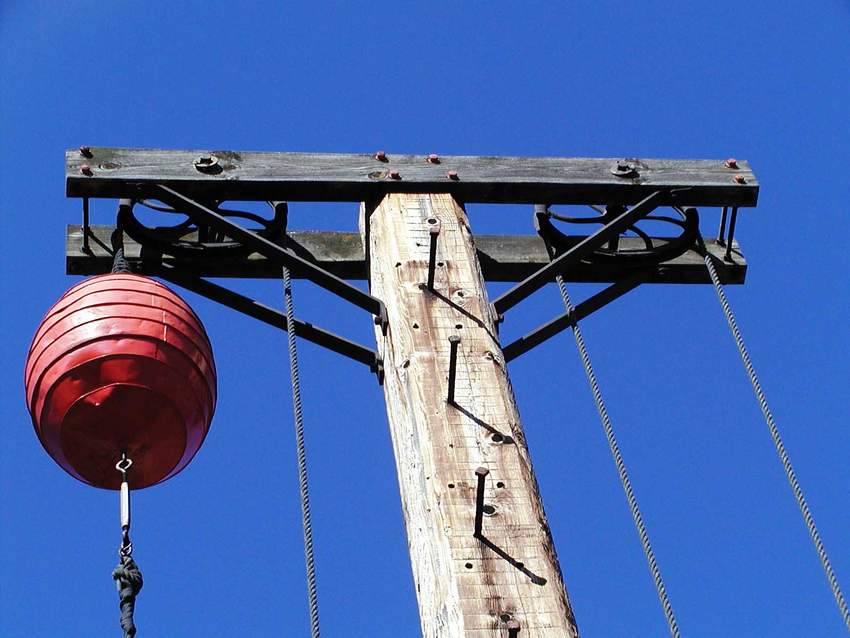
Picture at the Conway Scenic RR, North Conway NH
left photo: photographer archlaper, 9/2011,
found here
right photo: Ralph Cunningham, October, 2004, found
here
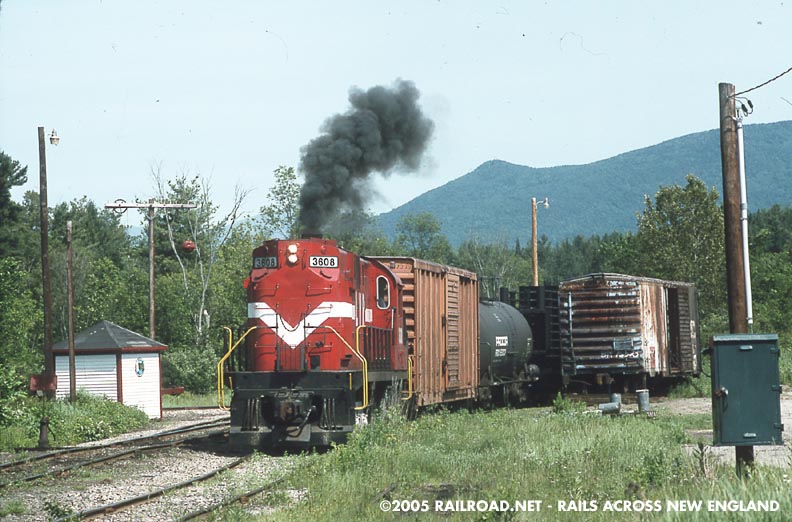
Banjo
Thomas Seavy Hall invented the Banjo signal in 1869, two years before forming the Hall Signal Company. It is given that name because of it's appearance, and how it
resembles the bottom of an inverted banjo. The invention of the Banjo signal predates that of the semaphore by about ten years.
US&S made a similar signal, usually referred to as a Banner signal.... I will have to see if I can come up with a non-copyrighted picture of one, Brian Solomon has a picture of one on the B&M in his book.
Banjo signals work by an actuating mechanism pulling a hoop covered with a colored piece of fabric (commonly silk), in front of an opening so the engineer could see it by day, and some of them had a much smaller window at the top which was illuminated for night time operation - the color was the same as the main indication. As far as I can tell from the resources I have come across, Banjo signals were two aspect.
Banjo signals were failsafe, and operated magnetically. The clear banner would be pulled into view by an electromagnet, and when de-energized, would allow the clear disc to fall out of sight by gravity. The two "lenses" were attached to the same arm so they would move together - the arm also (usually) had a counterweight. Since the larger one was heavier, the pivot point was placed so it would let gravity act on it, pulling both discs out of sight. According to Solomon, two magnets were used, one to move the lens into position, and another to hold it in place (similar to the operation of a semaphore, where a lesser current was used to maintain the semaphore in position once pulled into place using a larger current). Thanks to John Ingham of the U.K. for correcting my oversight on Banjo signals not being failsafe.
Because Banjo signals were only two aspect, they were usually used in pairs on the mainline, one used as a home signal and the other a distant, or approach signal. If the next signal was showing a red (we call it stop, but back then it was called a danger signal), the distant signal would display a blue, which was common in those days for that aspect. The picture below from the Reading has obviously been updated to show the "newer" colors. Also remember that back in the very early days of railroading, a clear signal was usually indicated by white, and not green.
There are few remaining examples of this signal type around. Julie Johnson of the Illinois Railway Museum estimates that there are around a dozen or so of these signals left in existence, the majority of which are in museum collections. I am aware of banjo signals at the IRM in Union IL, Orange Empire in Perris CA, and the Railroad Museum of PA, in Strasburg. The first picture set below is from one of the few known signals that is in private hands.
One source of info used above is
from Brian Solomon's book (2003) Railroad Signaling,
and is easily found almost everywhere.
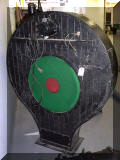
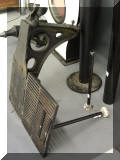
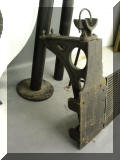
The pictures above are of a banjo signal that recently
sold on EBay for $15,000, the auction ended on Sep 14th, 2007. Altho the
listing stated that the date on the signal was 1843, the signal was probably
from much later. Looking at the photo below, you can easily see how the mounting
bracket was attached to the mast and used to support the signal.
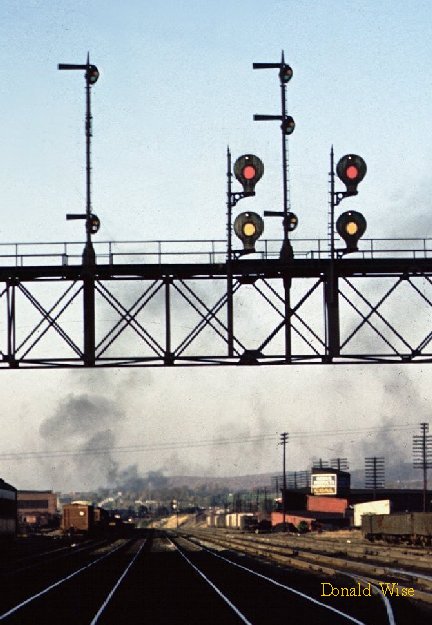
This photo, by Donald Wise, was taken in Reading
PA, sometime in the early 40's (I believe)....ah, the good ole days! This
is one of the very few pictures I have come across on the internet and was well
"hidden".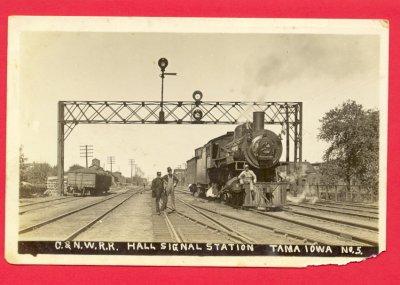
Another photo I came across on the internet, not sure where, but
it shows a banjo installation on the CNW in Iowa. Notice the semaphore
also in use, possibly in conjunction with the banjo
signal?
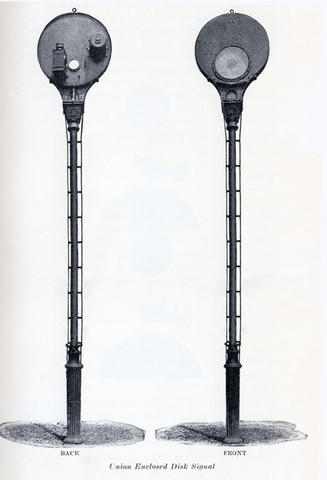
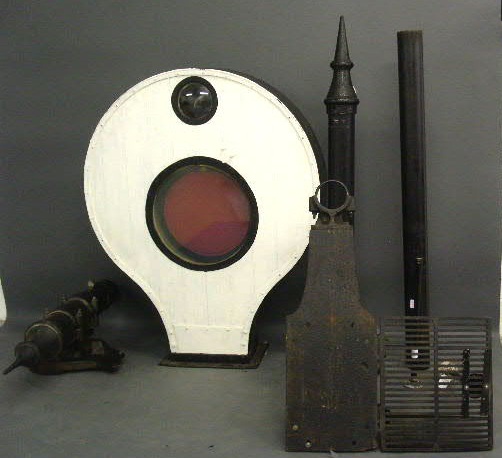
Picture from an early US&S catalog. On the right, a picture of a Banjo
signal sold by Wiederseim Auctions, the projected price was $7000-9000, but sold
for $15K.... 
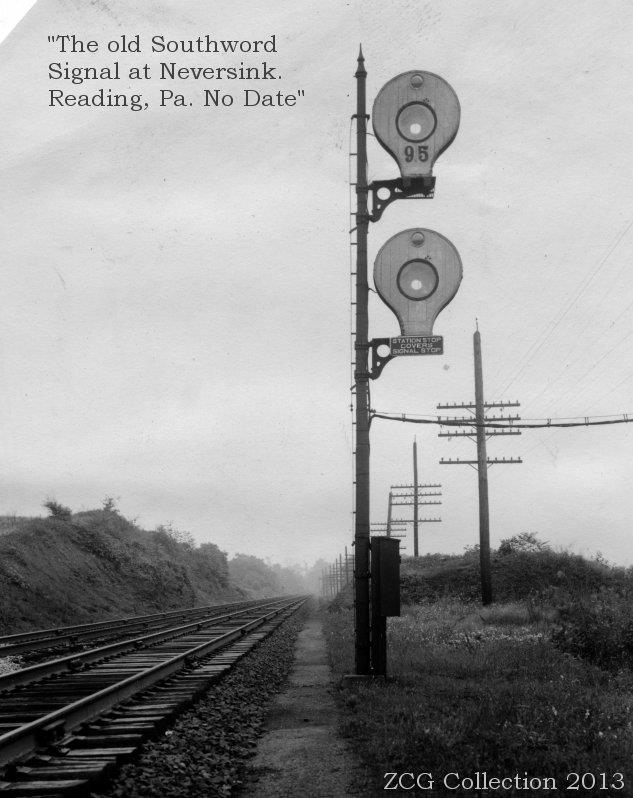
It seems as if most of the
pictures floating around of Banjo signals come off the Reading RR for some
reason.
These two are no exception, and we thank Zak for finding them
and posting them on the web.....
Many, many more pictures of his can be
found here
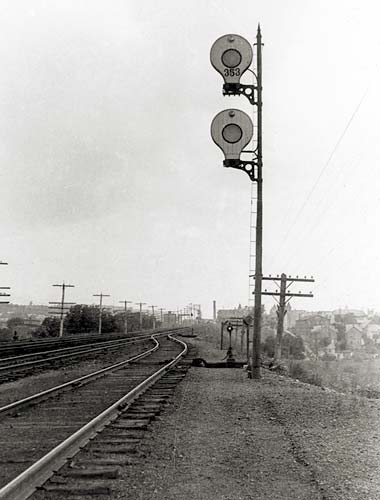

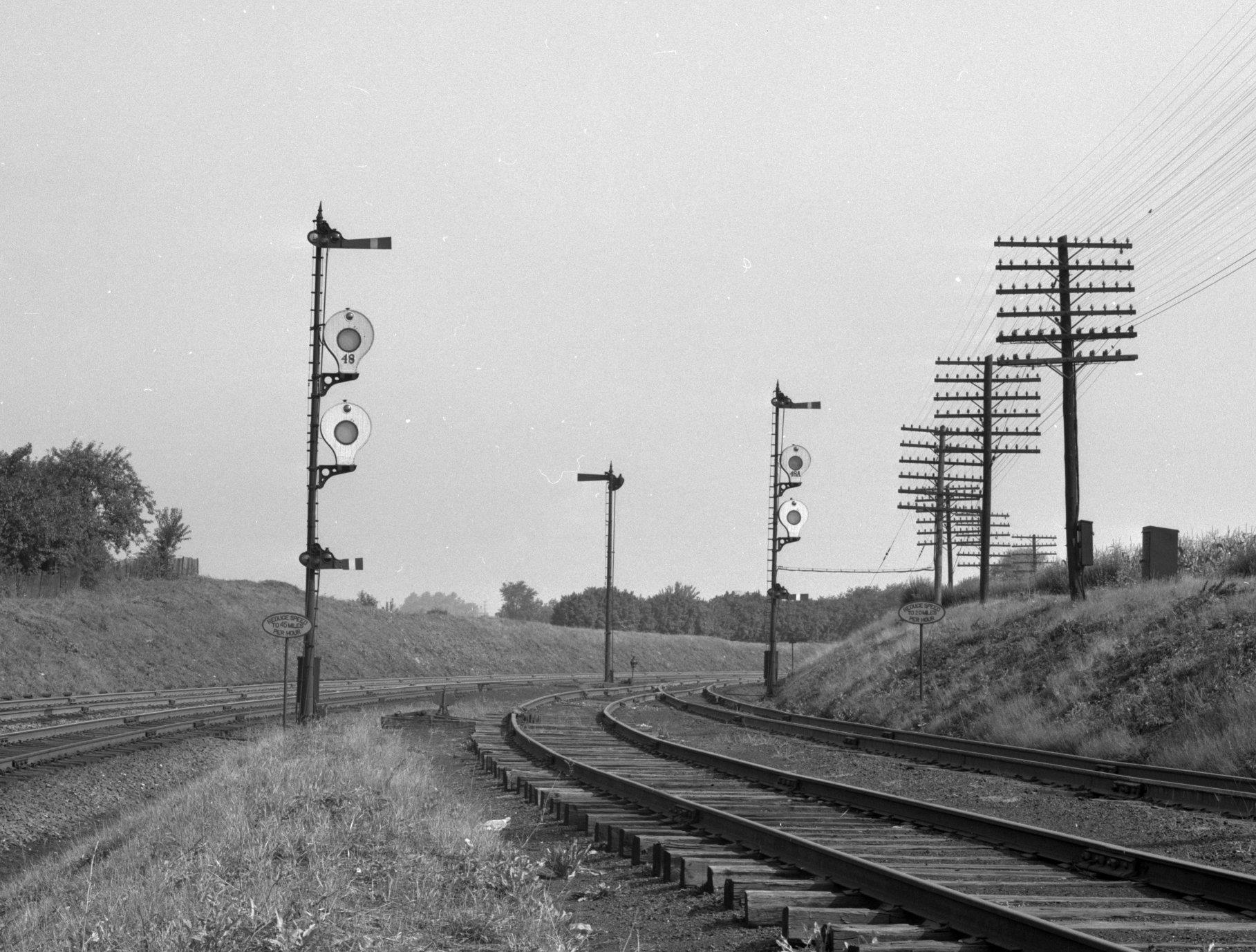
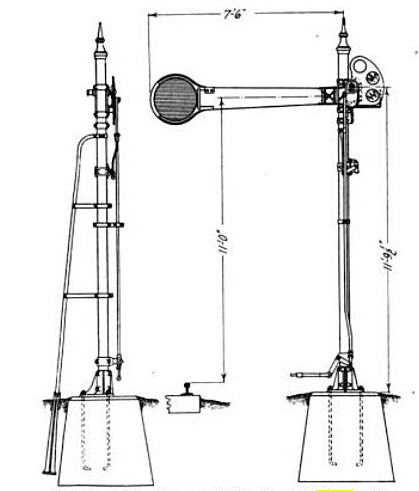
Smashboards were used by the railroads for basically two
purposes: 1) They alerted the engineer to a potentially very dangerous
condition, such as an open bridge span and the train could wind up in the
drink, and 2) They provided management with a visual affirmation that the
engineer did not stop "in time", after he went by the smashboard and broke it
off.
As shown below, the smashboard will be in the "up" position until the protected
structure is in a position where trains can not use it - as with a bridge - if
the bridge is down, aligned, and locked, the smashboard will be up. As
soon as the bridge is unlocked and starts to move out of position, the
smashboard will come down.
Smashboards have their origins with the semaphore, and the similarity can be clearly seen in the above drawing. The drawing is from a US&S catalog, showing dimensions of one of their models, circa the 1940's or so.
These unique signals are becoming rarer and rarer all the time. I know of three that used to be around in New Jersey.... Two are/were on both sides of the PATH "Dock" bridge in Newark NJ - one of which was removed several years ago (the EB one). The third one was on a Conrail branch in southern NJ, and was featured in an issue of Railpace a few years back - I haven't visited the site, so I cannot say whether or not this one is still around.
Below are pictures of the surviving smashboard in Newark on the PATH tracks, and there is a parking lot next to the track where these pictures were taken from. The high rise building to the left of the bridge in the second photo is the NJT Headquarters building; we're looking east, or south. A BIG THANKS goes to Rich W. for taking the time to go out and take these pictures for me!!! The accompanying colorlight signals are also pretty old!
Tilting target signals were used where two railroads crossed each other. The two thumbnails below show the two positions you will see them in, and the engineers of each railroad knew which indication applied to them. As far as I know, they were/are all manually operated, and rarely interfaced into a signal system.
Quite often, these signals aren't very close to a road, so they often go unnoticed by most railfans. This is the case when I was in Kokomo Indiana some 11-12 years ago, and was not aware that there were 3 or 4 of them in town - so the only one I have a picture of was taken by chance because I was taking pictures of a freight leaving town. I also missed one in Bay City MI, bummer :-) The one I got pictures of in New Castle PA, I only got because a local railfan took me there, as it was well hidden under an overpass, and there was no clear path down to it from the main road.
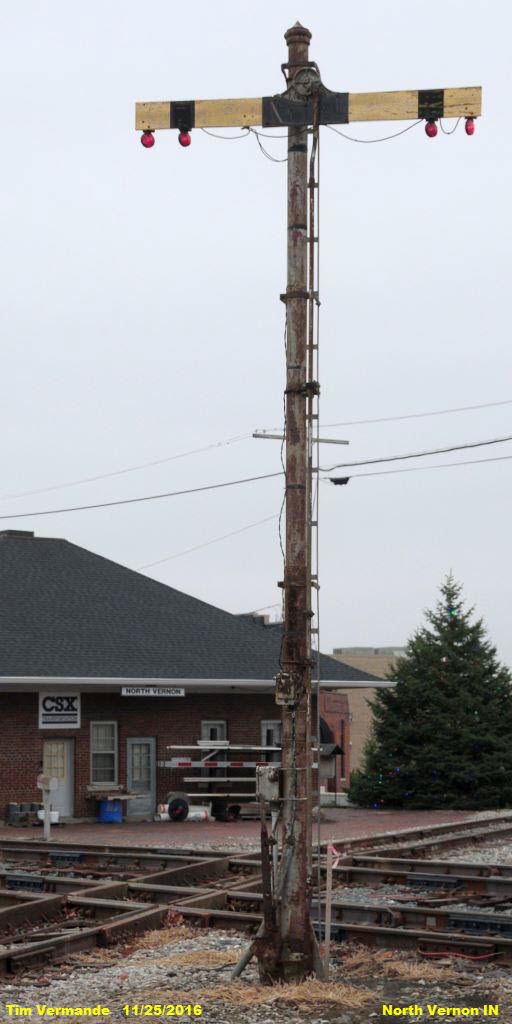
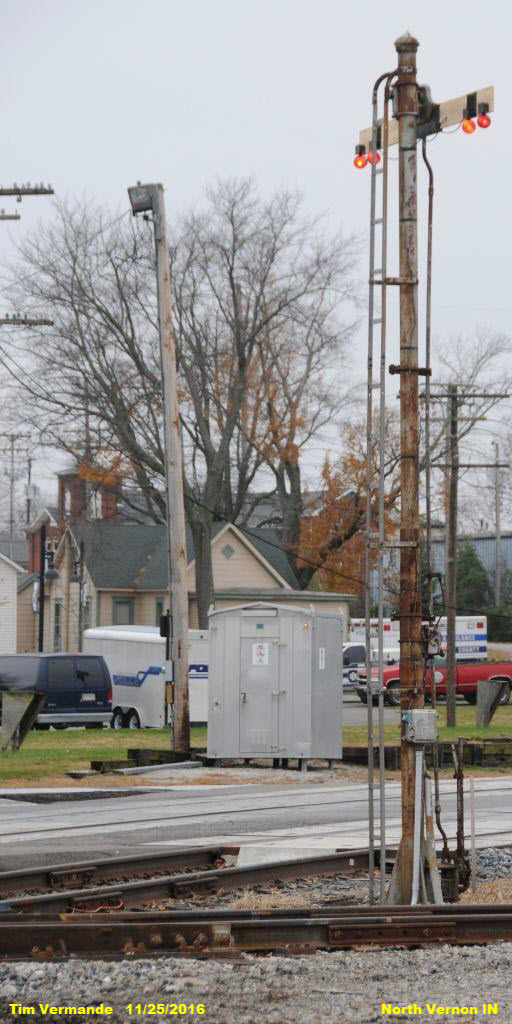
New Castle PA
_small.jpg)
_small.jpg) These two pictures courtesy J.S. Ingham of Wallingford England
These two pictures courtesy J.S. Ingham of Wallingford England
Bay City MI
Pictures courtesy J.S. Ingham
I took the above picture in October of 2011. I had talked to Mr. Ingham on the whereabouts of this signal, and after visiting Bay City twice, gave up looking for it. That is, until I got home and started looking at the pictures I took. If you look at the far left of the above photo, you will see the red part of the signal. Now all I have to do is go back for better pictures now that I know it's location :-) (I left the picture in it's original size so you can see the detail)....
Bellaire OH
Pictures courtesy J.S. Ingham
Bellevue OH
This signal is in the NKP Museum's collection, and was formerly in Freemont OH
Pictures courtesy J.S. Ingham
Canton OH
Pictures courtesy J.S. Ingham
Carroll OH
This signal is in someone's personal collection.
Pictures courtesy J.S. Ingham
Cleveland OH
Pictures courtesy J.S. Ingham
Coshocton OH
Pictures courtesy J.S. Ingham
Dover OH
Pictures courtesy J.S. Ingham
Justis OH
Pictures courtesy J.S. Ingham
Kokomo IN
Kokomo had a bunch of tilting
targets around when I was there in 1999, too bad I didn't know about them then.
In the photo at the top of the page, I didn't even know it was in the shot!
Above pictures courtesy J.S. Ingham



As mentioned above, CIND GP-30 #2252 passing a tilting target in Kokomo IN in 1999.
Minerva OH
Pictures courtesy J.S. Ingham
Newark OH
Pictures courtesy J.S. Ingham
North Vernon IN
Pictures courtesy J.S. Ingham
Plymouth OH
Pictures courtesy J.S. Ingham
Reese MI
Pictures courtesy J.S. Ingham
Springfield IL
Pictures courtesy J.S. Ingham
Springfield OH
Pictures courtesy J.S. Ingham
Union IL - at the IRM
According to Mr. Ingham, this tilting target signal was originally in Jackson OH.
Pictures courtesy J.S. Ingham
Youngstown OH
Pictures courtesy J.S. InghamSemaphores
Semaphore signals have their own section.
If you have anything to contribute, please pass it along to me, contact info is here
Disclaimers:
I love trains, and I love signals. I am not an expert. My webpages reflect what I find on the topic of the page. This is something I have fun with while trying to help others.
Please Note: Since the main focus of my two websites is railroad signals, the railfan guides are oriented towards the signal fan being able to locate them. For those of you into the modeling aspect of our hobby, my indexa page has a list of almost everything railroad oriented I can think of to provide you with at least a few pictures to help you detail your pike.
If this is a railfan page, every effort has been made to make sure that the information contained on this map and in this railfan guide is correct. Once in a while, an error may creep in :-)
My philosophy: Pictures and maps are worth a
thousand words, especially for railfanning. Text descriptions only
get you so far, especially if you get lost or disoriented. Take
along good maps.... a GPS is OK to get somewhere, but maps are still
better if you get lost! I belong to AAA, which allows you to get
local maps for free when you visit the local branches. ADC puts
out a nice series of county maps for the Washington DC area, but their
state maps do not have the railroads on them. If you can find em,
I like the National Geographic map book of the U.S..... good, clear, and
concise graphics, and they do a really good job of showing you where
tourist type attractions are, although they too lack the railroads.
Other notes about specific areas will show up on that page if known.
By the way, floobydust is
a term I picked up 30-40 years ago from a National Semiconductor data
book, and means miscellaneous and/or other stuff.
Pictures and additional information is always needed if anyone feels
inclined to take 'em, send 'em, and share 'em, or if you have
something to add or correct.... credit is always given! BE NICE!!! Contact info
is here
Beware: If used as a source, ANYTHING from Wikipedia must be treated as being possibly being inaccurate, wrong, or not true.
RAILFAN GUIDES HOME
RAILROAD SIGNALS HOME
New 10-6-2006
Last Modified On:
14-Nov-2020